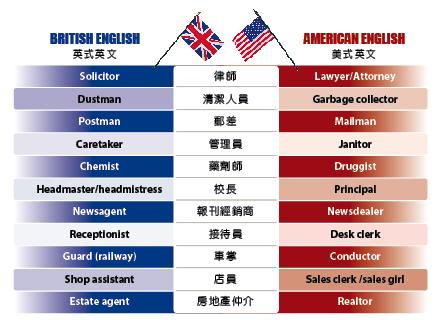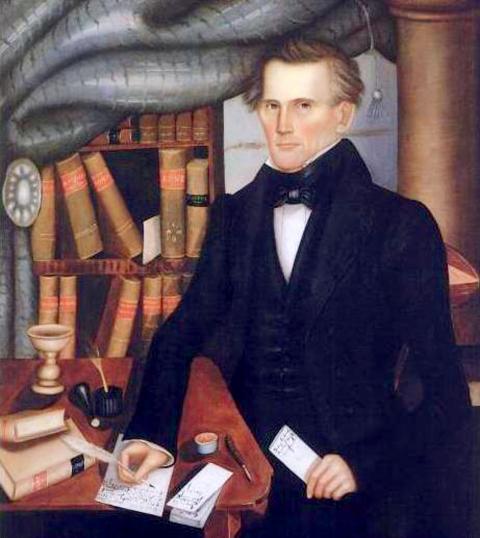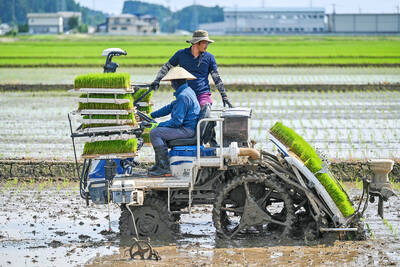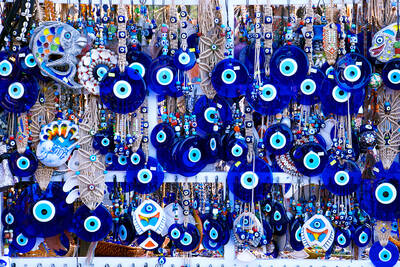American and British English are largely the same, although differences certainly exist, evolved over two and a half centuries of separation of Britain and its former colony. In some cases, words have been borrowed from different sources: British English, for example, uses the word coriander, derived from French; American English uses cilantro, derived from Spanish (both originate from the Latin coriandrum); differences in spelling are in part due to choices made by Noah Webster, creator of the American Dictionary of the English Language, which established certain spelling conventions used in the US, and which forms the basis of the Merriam-Webster dictionary.
Over the next six months we will be looking at differences in spelling, grammar, word choice and linguistic convention between American and British English. In the above table are some examples of differences in word choice for professions.
(Paul Cooper, Taipei Times)

美式英文和英式英文基本上是相同的,但是美國已脫離英國殖民兩個半世紀,因此美式和英式英文之間的確存在著差異。有些字是借自其他語言,例如「香菜」一詞,英式英文是用「coriander」這個字,源自法文;美式英文則是說「cilantro」,源自西班牙文(二者皆源自拉丁文「coriandrum」)。 英式與美式英文拼寫上的差異,部分是由於《美國英語詞典》的編纂者諾亞‧韋伯斯特的決定。《美國英語詞典》是韋式字典的基礎,建立了美國拼寫某些字的慣例。
接下來的六個月,我們將介紹美式和英式英文之間在拼寫、語法、用字和語言慣例方面的差異。上方的表格所列舉的,是一些職業名稱在兩者間的差異。
(台北時報林俐凱譯)

Photo: Wikimedia Commons
照片:維基共享資源

Rice is essential to Japanese culture, tradition and politics. People take pride in the oval-shaped sticky Japonica grain, which is still a staple even though total consumption has fallen over the decades. But since last summer, prices have soared as supplies have fallen short of demand. The government has long paid farmers to cut back on rice acreage, and change to other crops to keep rice prices relatively high. To cope with shortfalls this year, the government has released rice reserves. But the grain has been slow to reach supermarket shelves. Anger over that was part of the reason the Agriculture Minister

In Taiwan, 7-Eleven convenience stores can be found on almost every street corner. With over 84,600 stores across 20 countries, 7-Eleven has more locations than any other retail business on Earth. For millions of people, the chain is an important part of daily life, providing coffee, quick meals, and essential items for those __1__. The history of 7-Eleven began nearly 100 years ago in Dallas, Texas. In 1927, the Southland Ice Company began selling blocks of ice that were used to keep fridges cool. Shortly after opening, the company __2__ its offerings to include groceries like milk, eggs, and

Step into any corner of Turkiye, and you’ll likely encounter the iconic “Evil Eye,” known as “nazar boncu?u” in Turkish. This striking blue glass ornament is shaped like an eye with concentric circles of dark blue, white, and light blue. While its name in English suggests something threatening, it’s actually a charm designed to ward off misfortune. The origins of the nazar boncu?u can be traced back to ancient Mediterranean and Middle Eastern traditions. The word nazar comes from Arabic, meaning “gaze,” while boncu?u translates to “bead” in Turkish. Central to the nazar boncu?u’s mythology is the idea that

Continued from yesterday(延續自昨日) https://www.taipeitimes.com/News/lang In 1946, the company adopted the name 7-Eleven to reflect its newly extended __3__, from 7am to 11pm, a novel concept at the time. As a rapidly growing company, it began offering franchise opportunities in the 1960s. In 1974, the first 7-Eleven in Japan was opened by the supermarket company Ito-Yokado. The Japanese franchises were __4__ successful that by 1991, Ito-Yokado was able to acquire a 70 percent stake in Southland Corporation. Its investments eventually resulted in full ownership of 7-Eleven, which paved the way for the Japanese company to enter the international market. Since then, 7-Eleven